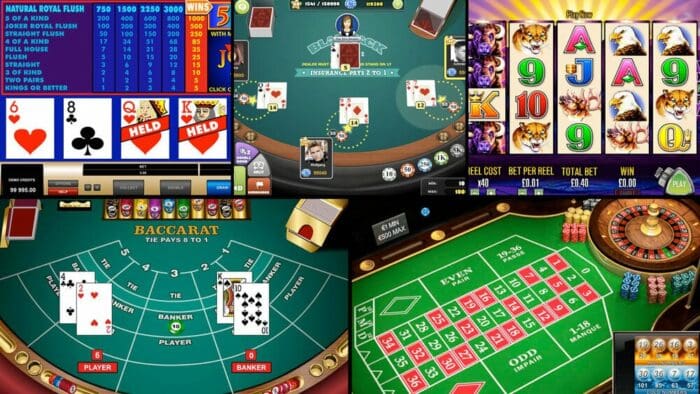 Gambling is a hobby as old as time, going all the way back to the Paleolithic period and even predating written language. One of the most recent developments to the pastime is electronic games, starting with slot machines, and evolving on to video slots and online games, as well as video poker and live table games. Computers and, even more so, the internet, have changed the art of gambling drastically over the past two decades. Players can now access beautiful, technologically complex games from the comfort of their own home with just the click of a button–but what exactly goes into making a successful casino game?
Gambling is a hobby as old as time, going all the way back to the Paleolithic period and even predating written language. One of the most recent developments to the pastime is electronic games, starting with slot machines, and evolving on to video slots and online games, as well as video poker and live table games. Computers and, even more so, the internet, have changed the art of gambling drastically over the past two decades. Players can now access beautiful, technologically complex games from the comfort of their own home with just the click of a button–but what exactly goes into making a successful casino game?
Some bettors may be surprised to find there’s more to a good casino game than balanced payout percentage odds, but there’s quite a lot that developers have to consider when crafting a game. Not only is it a thoughtful process from start to finish, but it’s also an intensely competitive one, fueling plenty of innovation and creativity in the industry. This is one of the reasons online gambling is fast-advancing, totaling an estimated $50 billion in 2019 and predicted to reach $100 billion by 2026.
The Lifecycle of a Casino Game
While playing an online game, it might be easy to imagine what went into its making, like how a developer may have conceptualized the theme or a designer may have laid out the backgrounds to catch the eye. But this kind of thought exercise misses some of the most important and time-consuming stages of game development.
Before developers can even start building on their game concept, for example, they need a strong understanding of their customer base and their resource pool. Often, the real first step in a game’s creation is analyzing market research. Using this research to learn about available technologies, social trends, and to create a plan is essential. This is the foundation developers will use to brainstorm an idea and then start to bring it to life.
Looks do Matter to Developers
At this stage, the creators are also taking their plan to the drawing board in a literal way, deciding on aesthetics and art concepts that will be expanded to completed designs. While art doesn’t necessarily have an impact on the overall function of a game, it is undeniably one of the defining features that could make or break a game for a lot of players. After all, the point of playing is not to win (although some players may disagree) but to play, and players want to play games that are engaging, attractive, and interesting to look at.
A unique style can set a game apart, and making sure the art for characters, reels, or the user interface ties into the theme will help to draw players in visually. Whether it’s a game show experience, the wild west, or even just an adaptation of a film, the art matters. If done well, good design can even provide a little intuition for players who may struggle with User Interface by adding helpful visual cues.
Mechanics and Materials
Once there’s a solid concept and enough market information to help support it, developers can start constructing a prototype. Creating a framework is a fast and messy way to begin feeling out how a game will work–and how to rework it if it doesn’t. Tools like Framer and InVision can help developers create mockups of their game without having to go through the entire coding process right away, and popular platforms like Unity have game-building developer tools to get the ball rolling.
After the prototype has helped iron out some of the initial kinks, the developers can start coding. This stage will bring together the entirety of the development team, wrapping up all of the previous steps to create a functioning game. This is probably the lengthiest part of the process combined with testing, as there may be a lot of back and forth between the two. When all that is finished, the game can finally be released!
Continuing the Cycle
Not so fast. A casino game’s release isn’t the end of the cycle. Usually, online and land-based electronic casino games will require technical support, maintenance, and updates from their developers to stay functional or at least relevant and fun. In turn, developers can use information from these continued updates as market research to create new games.
Trends and technology are constantly changing, and the gaming industry has been historically eager to keep up. Casino game software developers are no different, with brands both big and small adapting brilliantly to the market as it flexes over the years. There are a lot of steps and lots of hard work that goes into making a great casino game, but the ability to grow, innovate, and transform is the ultimate skill these developers have shown they have over and over again.
